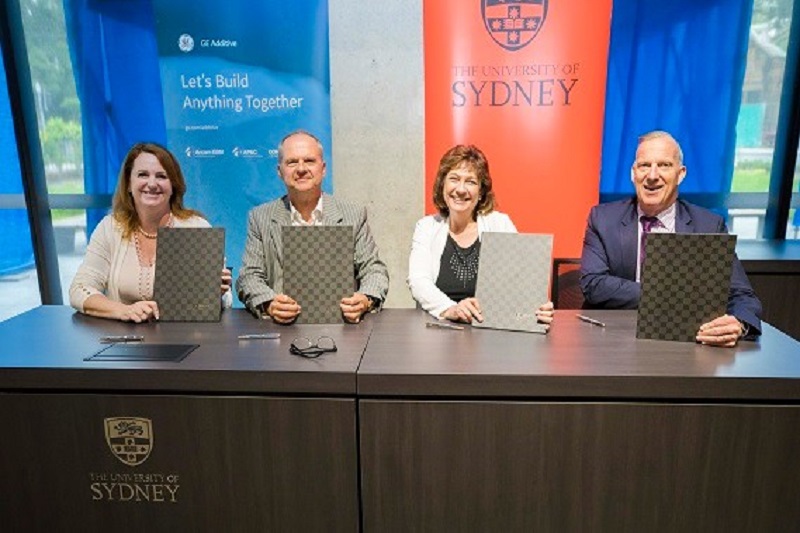
A collaboration aimed at establishing Sydney as a global leader in digitally-led metal additive manufacturing was recently made official.
As reported, the University of Sydney and GE Additive signed a 10-year Memorandum of Understanding (MoU) that supports the creation of the first metal additive manufacturing ‘total ecosystem’ in Australia.
This entails having the critical technology and people in place to drive commercial and economic opportunity, education, skills and job development, underpinned by a capacity for fundamental research.
Additive Manufacturing uses a digital design to create a three-dimensional object by depositing material as superfine layers in precise geometric shapes.
The digital development revolutionises industrial production enabling the creation of lighter, stronger parts and systems with digital efficiency and flexibility.
Shapes, sizes and structures, which would be impossible using conventional manufacturing, can be created.
The company will invest up to US$ 1 million annually under the agreement over ten years.
This funding will be used for research and development at the University in order to quicken the adoption of metal additive manufacturing in Australia and the region.
This MoU builds on the University’s world-class expertise in the disciplines essential to advanced manufacturing such as materials engineering and integrated digital systems.
The agenda can be set for this disruptive technology by partnering with the company, an industry leader in this area of manufacturing.
Moreover, it will guarantee that Australia is primed to contribute to this exciting next phase of the industrial revolution.
The collaboration will drive the research and development needed to learn how this disruption to manufacturing can be harnessed for economic benefit.
Additive requires a completely different way of engineering and thinking.
Educating and training current workforces with new skills as well as getting more engineers into additive take time and programs need to be developed over a number of years.
The University recognises this and in order to build the right mindset, the right skills, and the right materials, there is a need to encourage close collaboration between companies, academia and governments.
The MoU comes on the back of the University’s commitment to establish a new 1,000sqm Additive Manufacturing and Advanced Materials Processing research facility that will serve as a focal point for the partnership.
The development of this laboratory is the initial phase of a plan to build greater capacity and capability at the Parramatta/Westmead campus.
This addition to the University’s core research facilities will allow the researchers and research partners to conduct trailblazing fundamental research.
Moreover, it will directly benefit Australian industry, particularly the aerospace, transport, biomedical and defence sectors.
Establishing a world-class capability in Darlington/Camperdown is a key first step for their grand plans for Advanced Manufacturing in Paramatta/Westmead.
The MoU with University complements the company’s global hub-and-spoke strategic approach to research and development.
The approach encourages non-competitive partnerships with leading universities and research organisations on joint initiatives.
A master research agreement is included in the terms of the MoU and covers three areas:
- Materials and powder technologies, including alloy design, alloy modification, powder characterisation and powder characteristic-process response identification, post-processing optimisation and materials gaps in repairs
- Sensing technologies and advanced materials characterisation, which builds on the University’s experience with electron microscopy and the company’s Arcam electron beam melting (EBM) technology
- Image processing and data analytics
















